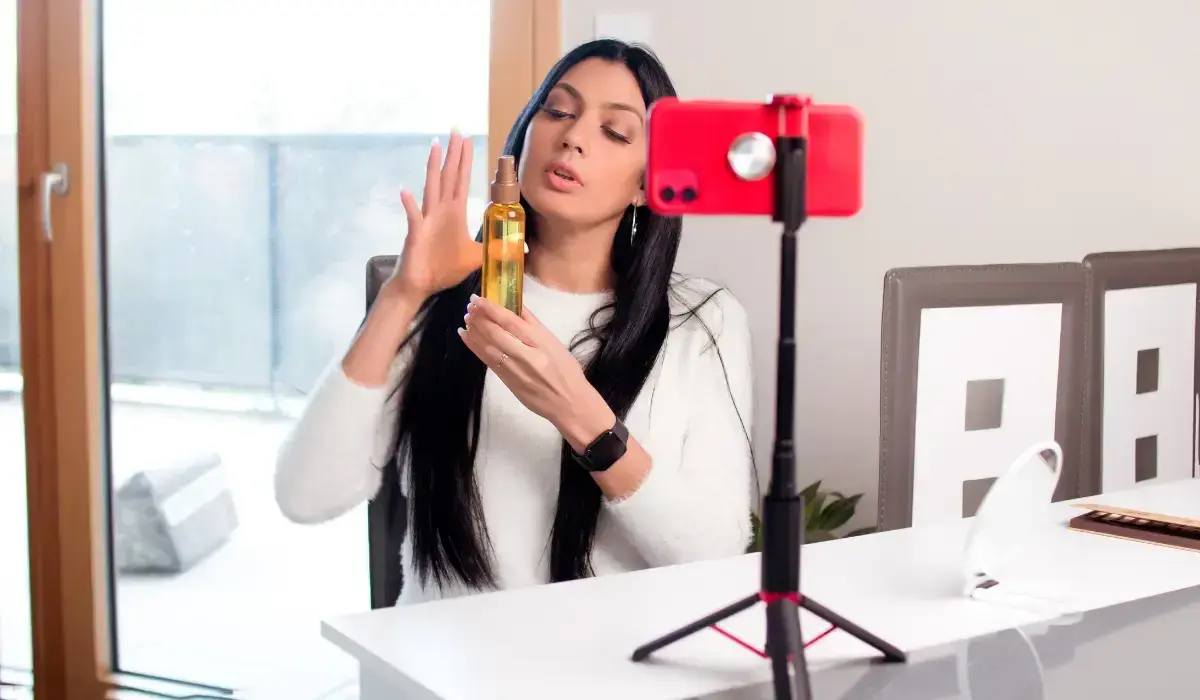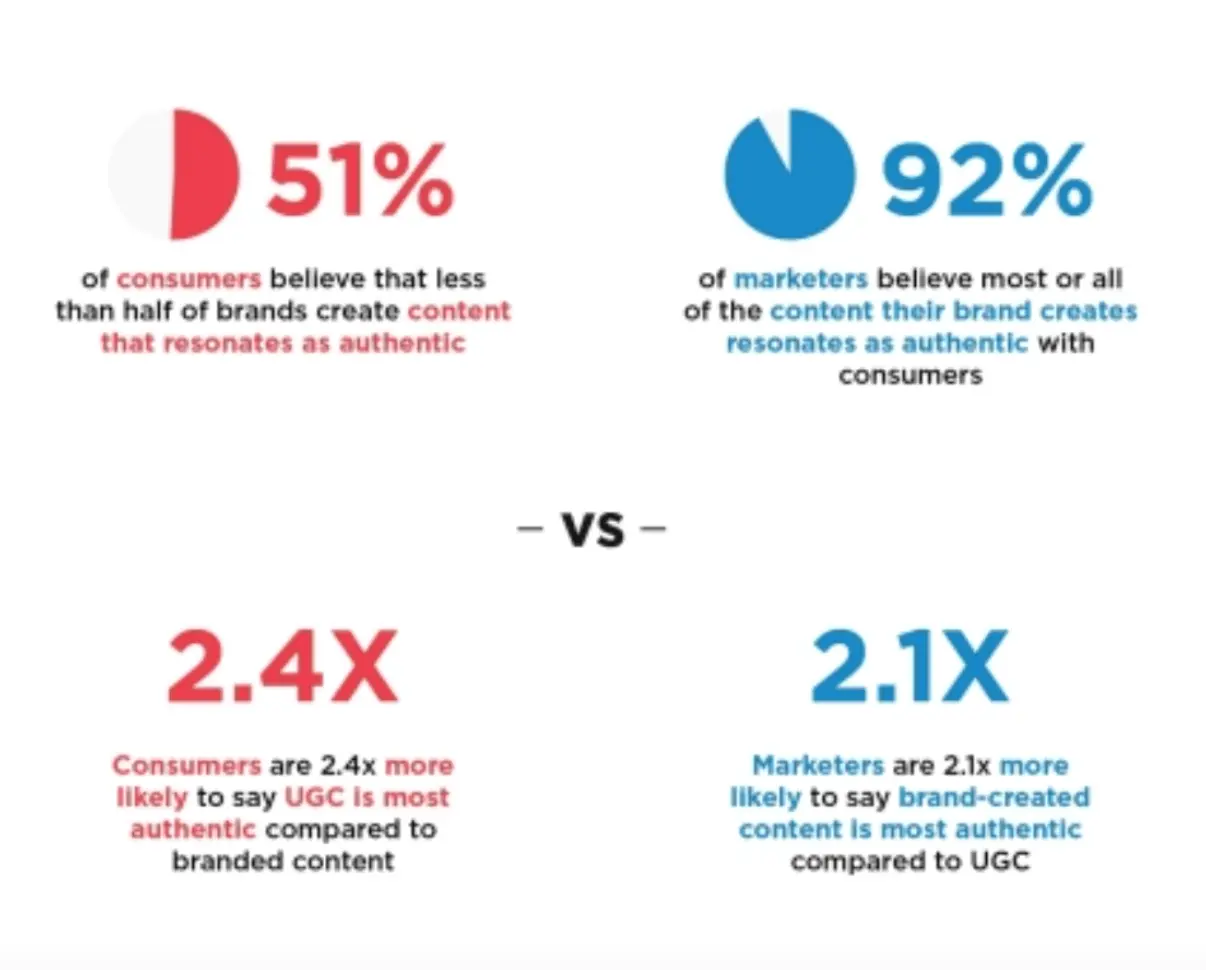If you're looking for a cheap but powerful way to create content and drive traffic to your site, it's hard to beat user-generated content.
Not only does it allow you to create content at scale, but user-generated content also resonates with your core audience — because your audience creates it.
But how do you create user-generated content, and more importantly, how can it be utilized inside your business?
Shortcuts:
- What is User-Generated Content?
- How User-Generated Content Helps Growth Strategies
- How to Get User-Generated Content
- How Can User-Generated Content Help You?

What is User-Generated Content?
Even if you've never heard of user-generated content (or UGC, for short), you most likely see it several times every day.
Video testimonials, reviews, podcasts, live streams, or even still images shared on social media are all forms of content that a brand's loyal followers create.
The key is that it has to be content original to the audience; it can't be manufactured in-house and then "masked" as coming from a consumer.
Occasionally, a brand will hire influencers to create this content or even ask their employees to do it. Still, the creativity involved in making the actual post has to originate outside of the marketing department.
Think of UGC as the modern-day version of word-of-mouth campaigns. Someone receives a product, has an emotion related to that product, then decides to tell their immediate audience about it.
The bigger the audience, the wider the reach, and the more impactful that content can be for your business.
Source: i7marketing
The main thing you have to be careful about is copyright and privacy issues.
User-generated content that features children under the age of 13, for example, risks violating the Children's Online Privacy Protection Act (COPPA).
Preserving internet safety for kids is an important topic (for several reasons), so make sure your brand guidelines for UGC don't run afoul of these types of restrictions.
How User-Generated Content Helps Growth Strategies
Relying on user-generated content as a key component of your marketing channel is scary. What if they don't like the product? What if a cranky customer leaves a scathing review that also happens to go viral?
Since a single negative experience can take years to recover from, most brands are very careful about how people advertise their products.
The truth is, users are already creating this content for your brand, whether you've asked them to or not. Helping to steer that process is your company's only hope to use this massive flow of content to your benefit.
-
Stronger authenticity
Brands like to control their image. Most businesses are under the impression that the content they create and serve to their customers is just as valuable — if not more so — than content created by the customers themselves. In reality, the inverse is true.
According to one study, customers are 2.5 times more likely to view UGC as authentic than branded content. That's not to say they don't value branded content, but it does mean that they trust UGC a lot more.
 Source: Business Wire
Source: Business Wire
Younger generations value this authenticity a lot more than older demographics. They don't want to see the shine of a product as much as its real-world, everyday application in the hands of real users.
97% of Gen Z consumers view social media as a primary source for shopping decisions. Social media, in exchange, is almost 100% UGC-based.
-
Content on autopilot
The future of SEO is uncertain, but most marketers agree that it will include lots of content. But creating substantial amounts of good content on a reliable schedule to stay competitive is expensive.
With a good UGC strategy in place, you will create more content than even the best teams could produce, and it will be almost entirely hands-off.
StuDocu is an example of an entire website geared around user-generated content.
Students upload study guides to the StuDocu website for anyone to access, which gives them a steady stream of material for their audience without having to pay writers to handle the research and writing process in-house.
Source: StuDocu
For that reason, having a good UGC strategy is a bit like a snowball. Once you build it up and push it down the hill, it continues to grow and gain steam until something larger knocks it off course.
-
Content flexibility
While having a lot of good content is great, having flexible content that you can use on various platforms is even better.
You'll get the most bang for your buck if you can use the same information for a paid ad, blog post, and Instagram story. User-generated content can be used at any marketing funnel stage, but it's particularly effective at the bottom.
Driving traffic to a landing page with several review images from actual customers can tip the scales for a potential customer to make a buying decision.
Source: Bizzabo
Alternatively, you can ask people to send in videos of themselves using your product — some in ways you never anticipated — and then compile it into a video ad.
If one submission highlights a use case that is relevant to a particular industry, then isolate that video and use it as a case study presentation on your website.
With this virality also comes an opportunity to improve your SaaS branding. Showcasing various applications reinforces who your brand is and what problems you’re trying to solve.
-
Creates dialogue
User-generated content encourages your audience to have a conversation with you about your product.
You asked for their input on your brand, and they delivered, allowing you to learn more about your product and how it can better serve your customers.
This dialogue increases buy-in and trust, which is really important in a world dominated by "fake news."
Source: Gallup
But just as important as opening up that dialogue is listening to the concerns that your brand loyalists have put forward.
If enough people are shouting for a certain improvement, use it as an opportunity to strengthen your relationship by taking their suggestions.
Many brands are already trying to manufacture this type of relationship via influencer marketing, but that can be extremely expensive for even middle-tier influencers.
Asking your users to create content for you is usually free and has the potential to reach a wider audience depending on who responds.
How to Get User-Generated Content
Since people don't usually like doing something for nothing, coming up with a way to get your users to create content for you can be a challenge.
There usually has to be some kind of incentive attached to it, whether that's fame or financial incentive. Below are some of the best ways to get your audience to send in content.
- Run a Contest. Ask your customers to submit photos of themselves using your product, with the promise that the best one will appear on the homepage of your website. Make sure you give them the tools that they need to do this task, like a background changer that can let them show how your product would look during a moon landing or on the Serengeti.
- Use a Survey. Surveys are valuable to get important feedback on your brand, but they can also be valuable sources of reviews and testimonials. Incentivize this process and get more responses by offering a discount to those that complete the survey. A tool like Paperform survey maker, Zonka Feedback, SurveyMonkey can help with this process.
- Tap Your Community. If you've got a Facebook group or form that is already active, pin a post asking for input. Use the right hashtags and repost or tag top contributors.
- Celebrate a Cause. Aerie, a side-brand of American Eagle, launched a campaign promoting body inclusivity. They asked their customers to share pictures of "real women" wearing their clothes and promised not to Photoshop or retouch the images in any way. The result was not only a massive explosion in exposure but also revenue — all by employing user-generated content.
- Share a Story. If your product is helpful to people's everyday lives, then highlight some of the stories in an ad campaign. Record videos of individual customers talking about a certain struggle that includes your product or service as an aid to their transformation. The best stories can be truly inspirational and shared like wildfire.
- Host a Takeover. While this should never be done without extreme oversight, letting one of your customers or another brand take the reins on your social media can be a great way to create original content. Let them devise the topics of conversation, stimulate dialogue, and interact with your customers. You never know what they might come up with.
- Use Social Listening. Listening to social media can help you find UGC from customers who post pictures of your products without mentioning your brand. This way, you can showcase authentic experiences with your product as the person sharing it didn't even think you'd find it. Reach out to those customers via DM to ask them if they would be willing to share the pictures with your brand.
Here are some inspiring user-generated content examples that testify to its potential.
How Can User-Generated Content Help You?
The best part about employing UGC in your brand is that every company's audience is unique.
Brand loyalists decide to follow you for a reason, and letting them share that reason can create a one-of-a-kind experience that other businesses won't be able to replicate.
While every piece of user-generated content is valuable, every once in a while, you find a nugget that really resonates with your crowd.
Once you find those valuable tidbits, they will accelerate your growth strategy and can even become a cornerstone of your marketing plan for years to come.
Author Bio
Shane Barker is a digital marketing consultant who specializes in influencer marketing, content marketing, and SEO. He is also the co-founder and CEO of Content Solutions, a digital marketing agency.
He has consulted with Fortune 500 companies, influencers with digital products, and a number of A-List celebrities.


